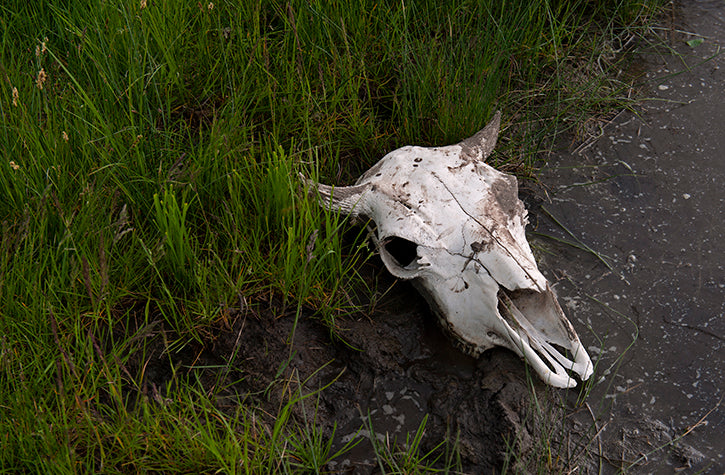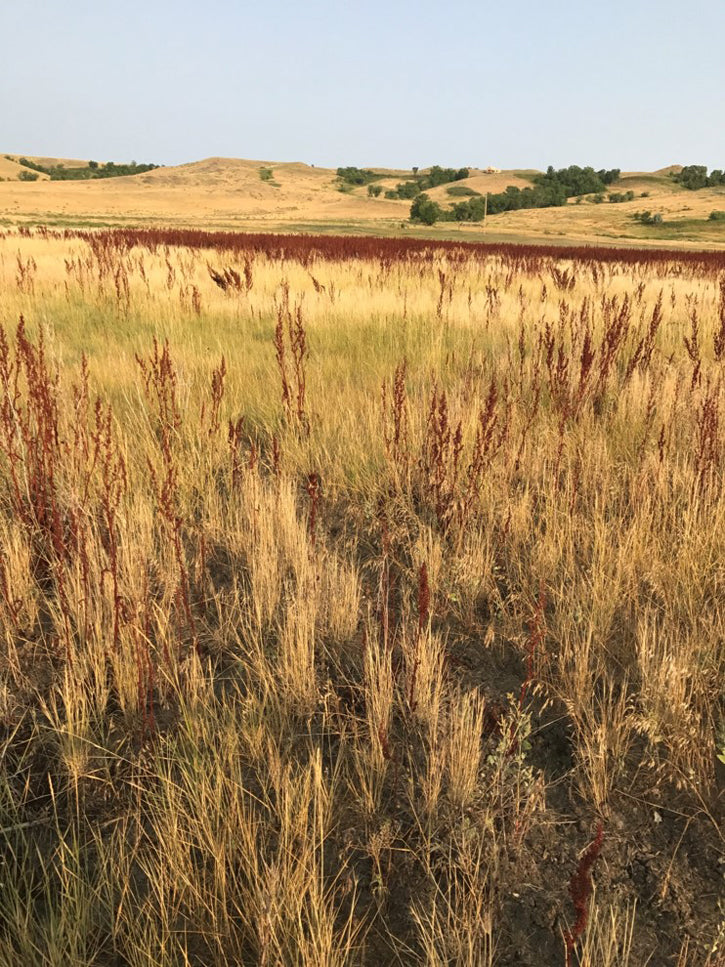Written by Colton Jones
Five years ago, the Wild Idea Cheyenne River Ranch started composting the unusable parts of the bison, returning that nutrient rich organic matter back to the earth. Colton lays out the process in his story below, which we published three years ago, but have updated with current photos. Give it a read.

Anyone who’s traveled across the Great Plains has seen the vast spaces housing various forms of energy that make up native plants and fauna. Here, plants and organisms have endured hundreds of thousands of years of evolution and developed their own way to utilize the prairie’s sole source of energy, the sun.
Some members of the prairie’s ecosystem convert energy directly from the sun for their own survival, and many primary consumers such as bison have evolved to depend upon these producers; secondary consumers such as wolves depend upon the primary consumers… and so forth, until a food web has formed.
About 10% of the sun’s energy makes it into earth’s atmosphere; the rest is reflected back into space. And within this 10%, a percentage of energy is lost between every interaction occurring in the food web. There’s nothing we can do about the 90% that’s “lost,” but we can do something about the rest. And that’s important, because that 10% supplies all of the ecosystems in the world.
Disruptions in energy exchange in any ecosystem could have detrimental effects on members of its communities. For decades, industrial agriculture has manipulated the flow of energy as it travels through the Great Plains ecosystem. The result is a decrease in biodiversity, and depleted soils. For years, the Cheyenne River Ranch was a victim of this disruption. In some areas it still shows in the form invasive plants such as, Cheatgrass (a grass that arrived on ships from Eurasia in the mid-to-late 1800s), and bare spots that present nothing but exposed soil.
For over a decade, the Cheyenne River Ranch and other producers in alliance with Wild Idea Buffalo Co. have been working to help our little piece of prairie to again capture the energy it once enjoyed in an undisturbed state. We do this with regenerative grazing practices, pasture monitoring, and on-ranch composting.

Above photo of compost being distributed on to disturbed land taken in 2017
For the last five years, the offal and bones (what’s left over after we’ve field-dressed a carcass) from the bison harvested on the Cheyenne River Ranch has been composted and dispersed via a manure spreader. This is done in disturbed areas that show low productivity and decreased diversity from years of farming. In other words, energy that would normally be removed from the ecosystem in the industrialized meat paradigm is now being retained within the system. This energy is utilized by producers such as grasses and forbs to increase their spread and ability to capture energy from the sun.
Many areas of the ranch are far from being in an original state, but progress is evident to a trained eye: We’ve seen an overall increase in ground cover and plant life. In turn, erosion and water evaporation have decreased, and overall bio-diversity has increased.
The process is slow and requires long-term planning and patience, but the reward comes in viewing long-lost residents such as Western wheatgrass, grasshopper sparrows, pronghorn sheep and sharp-tailed grouse all in a display of symbiosis.

14 comments